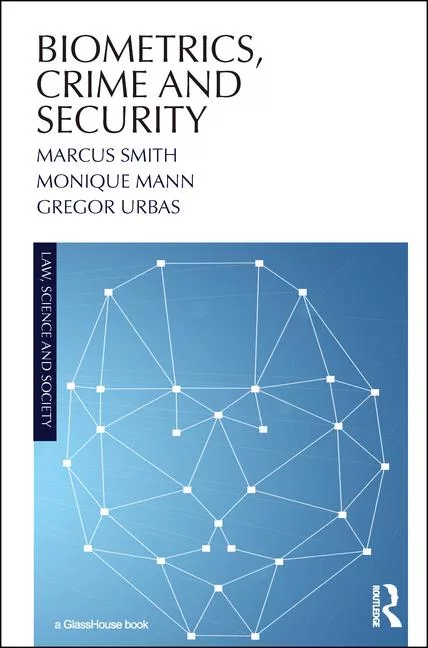Looking Ahead at Government Biometrics in 2014
The global biometrics market is expected to reach $20 billion by 2018, according to the recently released second edition of the Global Biometrics System Market Forecast & Opportunities, 2018 report. While public sector adoption of biometrics trails that of the private sector – as is the case with many emerging technologies – adoption across the U.S. government is accelerating.
The report indicates that fingerprint recognition technology represents the lion’s share of applied biometrics solutions today, and that is certainly the case for government organizations as well. That said, a number of developments indicate that 2014 will see government biometrics evolve more substantively beyond fingerprint recognition – and we are beginning to see that shift is underway.
In May, the Department of Homeland Security (DHS) issued a request for proposal (RFP) to add facial, fingerprint and iris recognition capabilities to its ID system as part of a $102-million upgrade. The FBI has also added iris recognition as part of its Automated Fingerprint Identification System (AFIS) and has been encouraging law enforcement agencies to capture the iris for inclusion in the AFIS database. Furthermore, at the annual ACT-IAC Executive Leadership Conference this year, FBI chief technology officer Jeff Johnson affirmed the expectation that biometric identifiers will become more ubiquitous in the coming years for commercial enterprises and government agencies. Johnson stated, “We can now essentially capture our fingerprint with a standard commercial device; there's nothing special about that endpoint. It really drives that price point down.”
Mobility, declining price points and improved accuracy of existing biometric systems are poised to drive greater government agency adoption and use of biometrics in 2014, particularly in three key areas: multimodal biometrics, facial and iris recognition, and mobile biometrics.
Increased Use of Multimodal Biometrics
While fingerprint recognition is useful for capturing forensic information, it is not as effective in real-time applications, such as access control. Fingerprint systems that require the user’s finger to be placed in a specific spot on a device can lead to substantial queuing at access control entry points.
Interest in multimodal biometrics, which involves systems that are able to capture multiple physical (fingerprint, iris, voice, etc.) or behavioral (keystroke or typing recognition, etc.) characteristics for verification or identification, is picking up as agencies seek to extend existing biometrics applications beyond fingerprint capture.
The Office of Biometric Identity Management (formerly US-VISIT) is one example. The Office, which supports the Department of Homeland Security’s responsibility by providing biometric identification services, started by using a simple fingerprint system to document entry into the U.S. Before DHS actually rolled out the system, it moved to a 10-fingerprint requirement – presumably seeking results beyond what is achievable with fewer than 10 fingerprints.
One reason for adopting multimodal biometrics is that it facilitates deeper information sharing. Agencies recognize that capturing multiple modes of biometrics (facial recognition, iris scanning, etc.) can assist with developing a common database structure and ensuring that agencies do not need to use the same type of biometrics to exchange interagency information effectively. Multimodal biometrics expands the tools at agencies’ disposal – and the intelligence that can be gained from these tools.
Maturation of Facial/Iris Recognition Technology
Government interest in iris recognition is driven by its accuracy relative to fingerprint scans. A person’s irises are stable from age 3 on, and each iris has more than 250 points of identification, giving it one of the lowest false accept rates of any biometric. If two irises are identified the odds of a false accept rate is one in more than one trillion.
The caliber of facial and iris recognition available to government agencies is making great strides. Until now, facial recognition efficiency required the subject to be facing the device straight on, typically indoors in a controlled environment with good lighting, and at close proximity (often as little as three to four feet away). At the same time, natural changes to a subject’s face (aging, facial hair, weight gain or loss, etc.) further challenged systems.
Our own technology development is a response to agency demand for more accurate, cost-effective technology that can capture irises with accuracy in controlled settings as well as in the unpredictable, ruggedized environments that military and first responders often face in day-to-day operations. By using off-the-shelf components, vendors are able to deliver innovative solutions at a price point that fits the reality of today’s tight budgets across the government.
Mobile Biometrics Move Beyond Concept Phase
As evidenced by fingerprint recognition capabilities on the iPhone 5 and facial recognition capabilities built into Google and Samsung’s Galaxy Nexus with the Android 4.0 operating system, commercial mobile providers are jumping into the biometrics business. Security of these devices is becoming increasingly important, since they contain powerful capabilities and sensitive personal information.
Traditionally, when consumers adopt new technologies, government users eventually follow. Consumer attraction to mobile biometrics – ease of use and decreasing cost – also applies to government users with increasing “consumer-grade” technology expectations. It can also be easier for agencies to weave mobility into their biometrics posture when they can take advantage of already developed commercial applications, such as the iPhone and Samsung products. The pace of government adoption of mobile biometrics is subject to issues associated with deploying more endpoint devices in a secure fashion, and in building in stronger security protections at the device and application level.
The arrow is pointing up for government biometrics, and as the depth and breadth of biometrics technology available to users continues to strengthen throughout 2014, we will see the pendulum shift from adoption to real-use cases and tangible results.
Looking for a reprint of this article?
From high-res PDFs to custom plaques, order your copy today!






